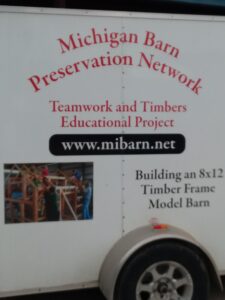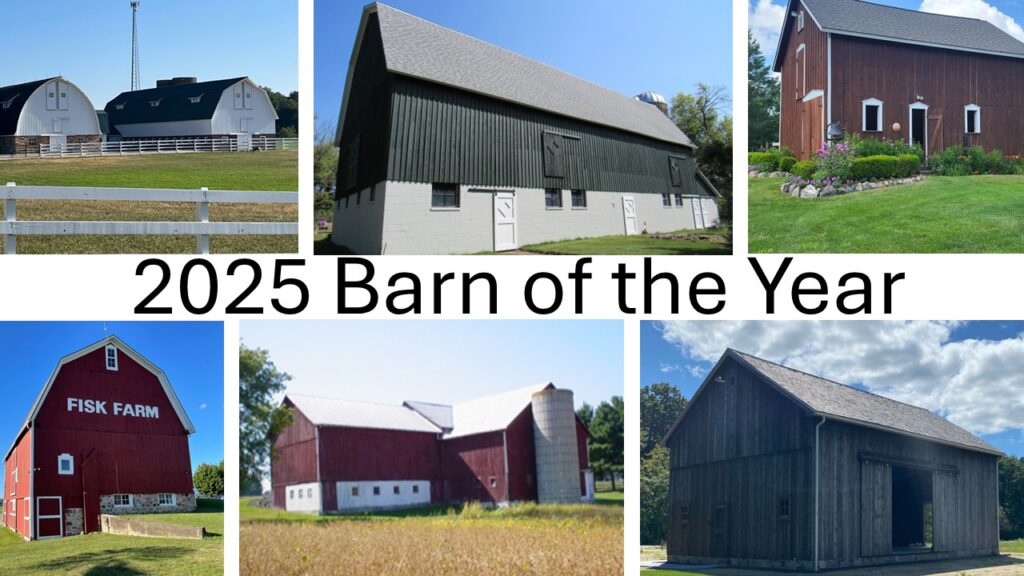
Six barns received the “Barn of Year” designation at the MBPN Annual Conference on March 15. Top Row (L to R): Merle Green Family Barns in Elsie, B&B Heartwoods Barn in Ann Arbor, Kucharek Barn in Howell. Bottom Row (L to R): Fisk Barn in White Lake Township, Somerville Barn in Mason, Gasior Barn in Fenton.
More about awards presented at Annual Conference
Founders Award
Sometimes it’s not so much about the barn, but the person behind saving the barn. The Founders Award, the highest honor bestowed upon someone for exceptional dedication to our mission of promoting the preservation and/or rehabilitation of Michigan’s barns and rural communities, was presented to Steven J. Brown, of Kalkaska, and Deron Nelson, of Coopersville, at the 2025 MBPN Annual Conference.
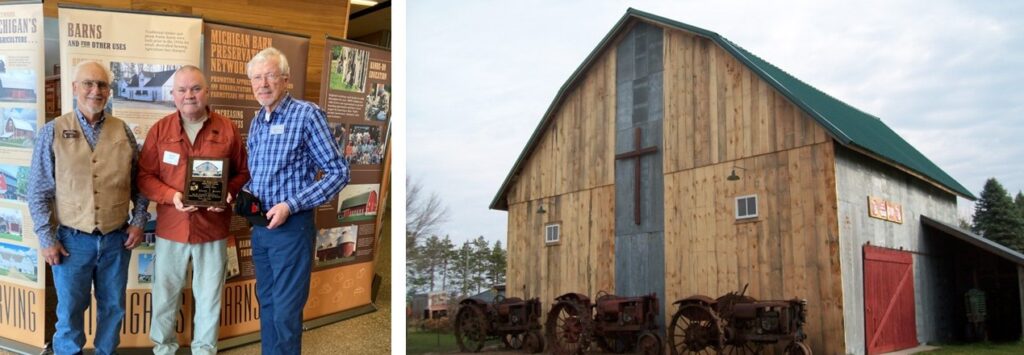

Click here for their stories — Brown’s restoration of Trails End Barn as a tool for healing after combat service in Iraq, and Nelson’s timber-framing projects to build new, traditional barns from scratch and enlist participation from the community for the barn raising.
Recap: 2025 MBPN Annual Conference

AgroLiquid Conference Center in St. Johns
The all-day event for networking, learning and camaraderie on Saturday, March 15 at AgroLiquid Conference Center featured exhibits, program speakers, a buffet lunch, a fundraising auction and the Barn of the Year awards.
This year’s presenters told stories about building and assembling timber frame barns and converting a dairy barn into a winery. We also heard how the tower silo got its start and became the iconic symbol of 20th-century American farmsteads.
Sentinels of the American Agricultural Landscape
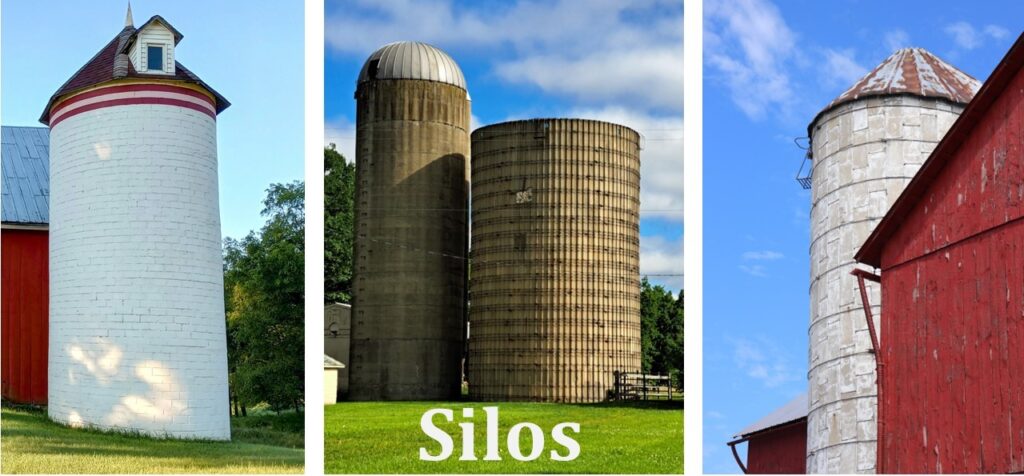
Ina Hanel-Gerdenich has done in-depth research on Michigan’s silo history. Her article for the MBPN 2025 barn calendar and excerpt of it in the MiBarn newsletter were precursors to her conference presentation.
Owner of Mirka Productions, LLC, Ina is a consultant in historic preservation, specializing in historic resources associated with rural agriculture. She has conducted many surveys of farmsteads and farm buildings, both as a private consultant and as an architectural historian. For MBPN, she has assisted with the organization of hands-on barn preservation workshops and currently serves on the Awards Committee.
Building New Timber-Frame Barns

Deron Nelson, a large animal veterinarian in Coopersville, Mich., has a strong interest in traditional agricultural practices, including timber framing. In 2012, he built his first timber-frame structure, a 32’x48’ horse barn with a full loft (pictured on left). He has since been involved in several other building projects and most recently constructed a 36’x48’ saltbox timber-frame hay barn with cupola and porch (pictured on right).
His two-part presentation covered design considerations, the process of cutting the members and joinery, assembly, raising the frame by hand, and finishes. View his slide presentation.
Adaptive Re-use: Stone House Vinyards
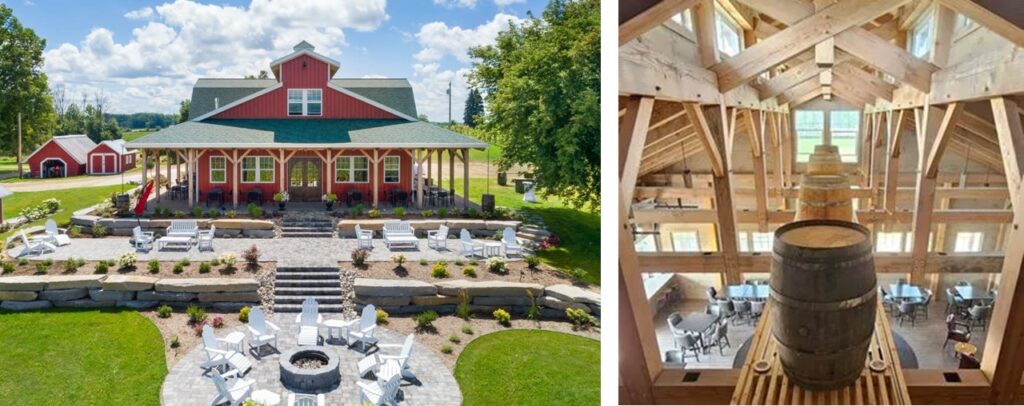
Greg, Kathy and Blain Adams are the owners and operators of Stone House Vinyards in Evart, Mich. Greg is the great-grandson of Ralph Hinkley, the founder of their farm, which was established in 1910 as a dairy farm operation.
The Adamses’ presentation showed us how they reimagined the property and turned it into a fruit farm. They opened a winery in 2018 complete with a renovated barn that serves as the tasting room for the public.
2025 Barn Calendar Features Silos
To order copies, go to the MBPN Online Store. MBPN members were sent a free calendar in the mail.

With silos as the theme, the 2025 MBPN calendar features Wild Pumpkin Farm in Gladwin County on the cover. Its barn has two concrete stave silos with whimsical murals by artist Zach Curtis. Inside is an article by architectural historian Ina Hanel-Gerdenich about the history of silos on Michigan farms.
Photos are by John Cole, Steve Karsten, Steven Brown and Mike Sexton.
Thank you to our advertisers. In addition to our returning supporters from 2024, we welcome Wieber Lumber in Fowler, Michigan Flywheeler Museum in South Haven and St. Clair County Farm Museum in Goodells as new advertisers.
MBPN’s Fall Bus Tour in Lapeer County
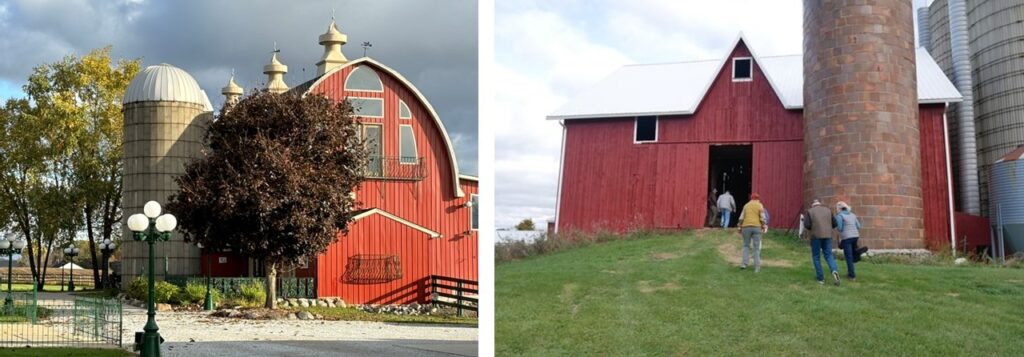
On Oct. 15, 2024, the bus tour visited Stonegate Farm event center; the Huntsman Hunt Club with barns and clubhouse on a private 1,000-acre shooting preserve; Gregory Dairy Barn, noted for its wooden silo; and Ivory Farms with its chestnut orchards.
Local barn photographer and author Wendy Lange was the presenter during lunch at the historic Old Town Hall/former opera house in the village of Metamora.
See program booklet and coverage in newsletter.

The Questions We’re Most Often Asked…
Q. Is there any funding for barn restoration?
The Michigan Barn Preservation Network keeps tabs on funding opportunities in the form of grants, tax credits and low-interest loans. Click here for the latest information about organizations and programs that provide some kind of assistance.
Currently there are no governmental grants in Michigan to help private owners of barns with restoration or repair of their personal property. Work on barns which are owned by municipalities, nonprofit organizations or other public entities may be eligible for consideration for grants and awards through governmental and foundation programs. Listing on the National or State Register of Historic Places is a requirement for most grants.
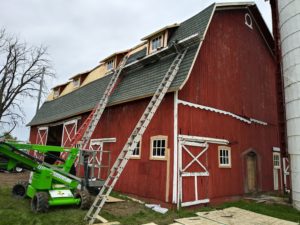 Q. How can I find someone to fix my barn?
Q. How can I find someone to fix my barn?
There are people all across Michigan who do repair work on old barns. Some do historically accurate timber frame work. Some do structural reinforcement by using cables. Some specialize in installing steel roofing and siding. Many will repair anything from foundation to cupola.
Our website provides a Contractor’s List as a place for barn owners to start looking for help.
Also check out Tom Irrer’s article about finding and vetting contractors.
Q. Why are barns red?
MBPN Board Member Keith Anderson offers several practical and cost-effective reasons why red became the dominant color of early barns. See article.
Q. Have questions about rehabilitating or repairing your barn?
MBPN has a committee of experts to answer your inquiries. Contact the chairperson, Steve Stier.
________________________________________________________________________________________________
Click here for current issue.
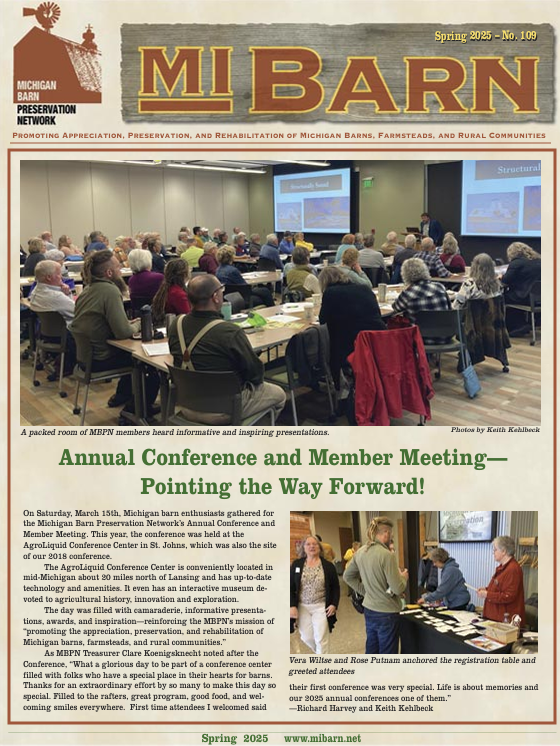
Spring 2025 issue
The Spring issue covers the Annual Conference and Barn of the Year award presentations held on March 15, 2025. Conference highlights included presentations by Ina Hanel-Gerdenich about silos, timber-framing construction by Deron Nelson and Kathy Adams’s story of converting a dairy barn into a wine-tasting room at their northern Michigan vineyard. The issue profiles the six Barn of the Year winners and two Founders Award recipients.
The public phase of MBPN’s endowment fund-raising campaign kicks off with participation in the Capital Region Community Foundation’s “35 Hours of Giving” opportunity to benefit non-profits that have endowment funds managed by the Foundation.
108 Issues and Counting…
Since 1996 this quarterly update for members has featured innumerable stories and photos of barns throughout Michigan…and reports on what our board members, volunteers and supporters are doing to promote our mission. Click here to read the very first issue.
Become a MBPN member to receive the print edition of the newsletter in the mail several times a year.
Visit our archived library of newsletters.
On the Road:
Teamwork & Timbers
Teamwork & Timbers is a one-of-a-kind learning opportunity for youth to experience the barn-raising tradition that was common in Michigan’s rural communities during the late 19th and early 20th centuries.
At the request of local organizations, our MBPN volunteers deliver the structural components to festival and school sites in Michigan and coordinate the assembly of a 1/4 size 19th-century timber frame model. While working on this life-size 3-D puzzle, students learn historic construction techniques and architectural terms. They also are challenged to use their math, science, and engineering skills.
This educational experience gives Michigan youth and adults a glimpse into our agricultural heritage, the pride of craftsmanship, and what can happen when people come together to accomplish something that they cannot do alone.
Contact MBPN to ask about scheduling T&T for your group.
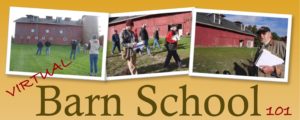 MBPN’s Barn School
MBPN’s Barn School
The Michigan Barn Preservation Network offers barn workshops and classes in both onsite and virtual formats. In the hands-on field program, participants spend a Saturday assessing the condition and stability of a barn and learn about barn architecture, construction, maintenance and repair approaches.
MBPN’s Virtual Barn School 101 is featured on the YouTube channel of the Michigan Historic Preservation. Our Technical Team (Steve Stier, Tammis Donaldson and Stephanie White) covered a brief history of barns in Michigan, barn terminology and parts, and free to low-cost fixes barn owners can do. View Webinar Replay here.
Learn more about the Barn School here.
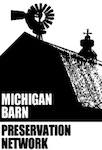
Welcome to the Michigan Barn Preservation Network (MBPN), a volunteer-based, statewide nonprofit dedicated to promoting appreciation, preservation, and rehabilitation of Michigan barns, farmsteads, and rural communities.
We are committed to the rehabilitation of barns for agricultural, commercial, public, and residential uses. Adaptive re-use is a significant strategy for barn preservation – all structures need a reason for being.
MBPN fosters the sharing of barn experiences and resources with this website and through educational events, recognition programs, connections and collaboration.
Barns symbolize positive qualities of American character: strength, honesty, endurance, security and family stability. They remind us of our heritage and help tell the story of rural life. They serve as landmarks while fulfilling the purpose for which they were originally designed, housing agricultural products and animals. With maintenance and some adaptations, they can serve us well for many years to come.
Mission: Promoting Appreciation, Preservation and Rehabilitation of Michigan Barns, Farmsteads and Rural Communities since 1995.

